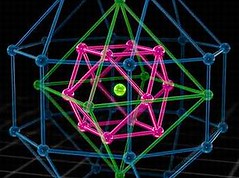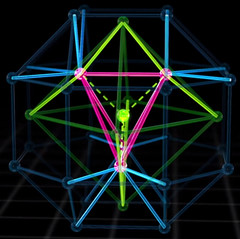 µŠ│µ┤▓ÕÆīÕÅ░ńüŻń¦æÕŁĖÕ«ČńÖ╝ńÅŠõ║åõĖĆń©«µ¢░ńÜäÕłåÕŁÉ’╝īµ£ēµ®¤µ£āń¬üńĀ┤µ░½ńćāµ¢Öķø╗µ▒ĀĶ╗ŖńÖ╝Õ▒ĢńÜäõĖ╗Ķ”üķÜ£ńżÖŌöĆŌöĆÕ«ēÕģ©ķ╗×ńćāµśōńćāńÜäµ░½µ░ŻŃĆé
µŠ│µ┤▓ÕÆīÕÅ░ńüŻń¦æÕŁĖÕ«ČńÖ╝ńÅŠõ║åõĖĆń©«µ¢░ńÜäÕłåÕŁÉ’╝īµ£ēµ®¤µ£āń¬üńĀ┤µ░½ńćāµ¢Öķø╗µ▒ĀĶ╗ŖńÖ╝Õ▒ĢńÜäõĖ╗Ķ”üķÜ£ńżÖŌöĆŌöĆÕ«ēÕģ©ķ╗×ńćāµśōńćāńÜäµ░½µ░ŻŃĆé
ķĆÖÕĆŗµÜ▒ń©▒ŃĆīõĖŁĶÅ»Ķ¼Äµ©ŻÕłåÕŁÉŃĆŹ’╝łChinese Puzzle molecule’╝ēńÜäµ¢░ńē®Ķ│¬õ╗ź28ķŖģ15µ░½Õī¢ńē®ńé║µĀĖ’╝īÕīģÕ£©õ║īńĪ½õ╗Żµ░©Õ¤║ńö▓ķģĖõĖŁŃĆé
ń¦æÕŁĖÕ«ČĶ¬¬’╝īķĆÖÕĆŗµ¢░ÕłåÕŁÉµś»ķĆ▓õĖƵŁźõ║åĶ¦Żµ░½ńÜäµ¢░ķĆöÕŠæ’╝īÕīģµŗ¼Õ”éõĮĢĶ«ōÕ«āķĆ▓Õć║µ▒ĮĶ╗ŖńÜäńćāµ¢Öķø╗µ▒Āń│╗ńĄ▒’╝īõ╗źÕÅŖÕ”éõĮĢń®®Õ«ÜÕ«ēÕģ©Õ£░Õä▓ÕŁśµ░½ŃĆé
Ķ©▒ÕżÜµ▒ĮĶ╗ŖĶŻĮķĆĀÕĢåµ║¢ÕéÖµśÄÕ╣┤µŖŖµ░½ńćāµ¢Öķø╗µ▒ĀĶ╗ŖµÄ©ÕÉæµø┤Õ╗ŻÕż¦ńÜäÕĖéÕĀ┤’╝īÕīģµŗ¼Ķ▒Éńö░FCVŃĆüķø¬õĮøĶśŁEquinoxńćāµ¢Öķø╗µ▒ĀńēłŃĆüµ£¼ńö░FCX ClarityŃĆüńÅŠõ╗ŻIS35ńćāµ¢Öķø╗µ▒ĀńēłÕÆīĶ│ōÕŻ½B-Classńćāµ¢Öķø╗µ▒ĀńēłŃĆé
ńćāµ¢Öķø╗µ▒ĀÕ░ćµ░½ÕÄ¤ÕŁÉńÜäõĖĆķĪåķø╗ÕŁÉÕŠ×ÕģČÕ¢«ķĪåĶ│¬ÕŁÉÕłåķøó’╝īńö©ķĆÖķĪåķø╗ÕŁÉĶŻĮķĆĀÕć║ĶāĮÕżĀõŠøķø╗ńĄ”ķø╗ÕŗĢĶ╗Ŗķ”¼ķüöńÜäķø╗µĄüŃĆé
õĮåµś»ńĢȵ£ēµ░¦ÕŁśÕ£©ńÜäµÖéÕĆÖ’╝īµ░½µ£āĶæŚńü½ńłåńéĖ’╝īµ»öµ▒Įµ▓╣µø┤µśōńćāŃĆéķ╗×ńćāµ░½µēĆķ£ĆńÜäĶāĮķćÅÕāģµś»ķ╗×ńćāµ▒Įµ▓╣ńÜäÕŹüÕłåõ╣ŗõĖĆŃĆéõ║║µēŗµīćõĖŖķØ£ķø╗Õ╝ĢĶĄĘńÜäńü½ĶŖ▒Õ░▒ĶČ│õ╗źķ╗×ńćāµ░½ŃĆé
ńÉåµā│ńÜäńÆ░ÕóāõĖŗ’╝īńćāµ¢Öķø╗µ▒ĀµČ▓µģŗµ░½ńĮÉõĖŁõĖŹĶ®▓µ£ēµ░¦ÕŁśÕ£©’╝īõĮåµś»ÕŬĶ”üõĖĆķ╗×ķ╗×ńÜäń®║µ░ŻÕ░▒ĶČ│õ╗źµ▒Öµ¤ōµ░½ńĮÉŃĆéĶɼõĖƵ░½µ┤®µ╝ÅÕć║’╝īÕ░ćµ£āĶłćń®║µ░ŻõĖŁńÜäµ░¦µÄźĶ¦ĖŃĆé
ŃĆī28ķŖģ15µ░½Õī¢ńē®ŃĆŹµś»µØ▒ĶÅ»Õż¦ÕŁĖÕī¢ÕŁĖń│╗õĖ╗õ╗╗ÕŖēķÄ«ńČŁńĀöń®ČÕ£śķÜŖÕÉłµłÉńÜäµ¢░ÕłåÕŁÉŃĆéÕģČÕī¢ÕŁĖńĄÉµ¦ŗµĖ¼Õ«ÜÕē浜»µŠ│µ┤▓µĀĖń¦æÕŁĖÕÆīµŖĆĶĪōńĄäń╣ö ’╝łANSTO’╝ē õ╗źµÖČķ½öÕĘźÕģĘKOALAÕ«īµłÉŃĆé
ANSTOµłÉÕōĪŃĆüÕĖāµŗēµĀ╝ńĀöń®ČµēƵÖČķ½öÕŁĖÕ«ČEdwardsÕŹÜÕŻ½Ķ¬¬’╝īŃĆīµŁżńĀöń®ČķĪ»ńż║’╝īÕ░浤Éõ║øńē╣Õ«ÜķŖģÕī¢ÕÉłńē®ÕÆīńĪ╝µ░½Õī¢ńē®µĘĘÕÆī ’╝łńĪ╝µ░½Õī¢ķłēµł¢BH4’╝ē ĶāĮÕēĄķĆĀÕć║µłæÕĆæµ¢░ńÖ╝ńÅŠńÜäŃĆÄõĖŁĶÅ»Ķ¼Äµ©ŻÕłåÕŁÉŃĆÅŌöĆŌöĆ µ░½Õī¢ńē®ÕÆīķŖģõ║ÆńøĖõ║żń¢Ŗ’╝īÕż¢ķØóÕīģĶ”åĶæŚõ┐ØĶŁĘµĆ¦ńÜäÕłåÕŁÉÕ▒żŃĆéŃĆŹ
ŃĆīµłæÕĆæńö©ÕģłķĆ▓ńÜäKOALAÕäĆÕÖ©ĶŠ©ĶŁśÕć║ķĆÖÕĆŗÕłåÕŁÉńÜäµĀĖÕ┐āÕ»”ķÜøõĖŖÕīģÕɽõĖŹÕ░æµ¢╝15ÕĆŗµ░½Õī¢ńē®’╝īµ»öµłæÕĆæķĀɵ£¤ńÜä8ÕĆŗÕżÜõ║åĶ┐æõĖĆÕĆŹŃĆéŃĆŹ
ŃĆīķĆÖÕĆŗµ¢░ÕłåÕŁÉµ£ēĶæŚÕēŹµēƵ£¬Ķ”ŗńÜäķćæÕ▒¼µ░½Õī¢ńē®µĀĖÕ┐ā’╝īÕÆīÕĘ▓ń¤źńÜäµ░½Õī¢ńē®µł¬ńäČõĖŹÕÉīŃĆüµø┤ÕŖĀń®®Õ«ÜŃĆéÕ»”ķÜøõĖŖ’╝īŃĆÄõĖŁĶÅ»Ķ¼Äµ©ŻÕłåÕŁÉŃĆÅ õĖŹÕÉīµ¢╝ÕģČõ╗¢ńÜäµ░½Õī¢ńē®’╝īÕ£©ń®║µ░ŻõĖŁńøĖńĢČń®®Õ«ÜŃĆéÕøĀµŁżµłæÕĆæĶ¬Źńé║ÕĆ╝ÕŠŚµĘ▒ÕģźńĀöń®ČÕģČńē╣µĆ¦ÕÆīµĮøÕŖøŃĆéŃĆŹ
ńĀöńÖ╝ķģŹķø╗ńĄäõ╗ČõĖĆńø┤µś»µ░½ńćāµ¢Öķø╗µ▒ĀõĮ£õĮÄńó│µ▒ĮĶ╗ŖÕŗĢÕŖøõŠåµ║ÉńÜäÕøøÕż¦ķÜ£ńżÖõ╣ŗõĖĆ’╝īĶĆīµŁżńÖ╝ńÅŠ’╝īÕÅ»Ķ«ōķģŹķø╗ńĄäõ╗ČńÜäńĀöńÖ╝ÕŠĆÕēŹķéüķĆ▓õĖƵŁźŃĆéEdwardsĶŻ£ÕģģĶ¬¬’╝īŃĆīķĆÖõĖ”õĖŹµś»Ķ¬¬µ░½ÕŗĢÕŖøµ▒ĮĶ╗ŖÕŹ│Õ░ćÕ»”ńÅŠŃĆéķĆÖÕĆŗńÖ╝ńÅŠÕÅ»ĶāĮĶ«ōµłæÕĆæÕ£©ķĆÖµóØĶĘ»õĖŖÕēŹķĆ▓õ║åõĖƵŁź’╝īõĮåµłæÕĆæõĖŹń¤źķüōķĆÖµóØĶĘ»ķéäµ£ēÕżÜķĢĘŃĆéķĆÖÕĆŗńĀöń®ČµēĆĶ¬¬ńÜ䵜»µ░½Õī¢ńē®ÕÅ»ĶāĮµś»Ķ«ōµ░½ķĆ▓Õć║ńćāµ¢Öń│╗ńĄ▒õĖ”õĖöń®®Õ«ÜÕ«ēÕģ©Õä▓ÕŁśńÜäµ¢╣µ│ĢŃĆéŃĆŹ
Õ░Źµø┐õ╗ŻĶāĮµ║ÉńÜäķ¢ŗńÖ╝µĘ▒ÕģʵäÅńŠ®
 µØ▒ĶÅ»Õż¦ÕŁĖµīćÕć║’╝īÕŖēķÄ«ńČŁÕ»”ķ®ŚÕ«żµēĆÕÉłµłÉÕć║ńÜäķŖģķćæÕ▒¼µ░½Õī¢ńē®’╝łcopper hydride’╝ē’╝īńĄÉµ¦ŗõĖŁÕɽµ£ēÕż¦ķćŵ░½Ķ▓ĀķøóÕŁÉ’╝łhydride’╝ē’╝īńģ¦Õ░äÕż¬ķÖĮÕģēµł¢µś»ÕŖĀńå▒Ķć│80ŌäāÕ░▒ÕÅ»õ╗źķćŗµöŠµ░½µ░Ż’╝īÕåŹÕŖĀÕģźµ░½Ķ▓ĀķøóÕŁÉõ╣ŗÕŠīÕÅłÕÅ»õ╗źÕ░ćõ╣ŗń®®Õ«ÜńÜäÕä▓ÕŁśÕ£©ńĄÉµ¦ŗõĖŁõĖ”õĖöń╣╝ń║īÕŠ¬ńÆ░Õł®ńö©’╝īńö▒µ¢╝µ░½µ░ŻõĮ£ńé║ńćāµ¢ÖõĖŹµ£āķĆĀµłÉńÆ░Õóāµ▒Öµ¤ō’╝īÕøĀµŁżķĆÖķĀģńĀöń®ČµłÉµ×£Õ░Źµø┐õ╗ŻĶāĮµ║ÉńÜäķ¢ŗńÖ╝µĘ▒ÕģʵäÅńŠ®ŃĆé
µØ▒ĶÅ»Õż¦ÕŁĖµīćÕć║’╝īÕŖēķÄ«ńČŁÕ»”ķ®ŚÕ«żµēĆÕÉłµłÉÕć║ńÜäķŖģķćæÕ▒¼µ░½Õī¢ńē®’╝łcopper hydride’╝ē’╝īńĄÉµ¦ŗõĖŁÕɽµ£ēÕż¦ķćŵ░½Ķ▓ĀķøóÕŁÉ’╝łhydride’╝ē’╝īńģ¦Õ░äÕż¬ķÖĮÕģēµł¢µś»ÕŖĀńå▒Ķć│80ŌäāÕ░▒ÕÅ»õ╗źķćŗµöŠµ░½µ░Ż’╝īÕåŹÕŖĀÕģźµ░½Ķ▓ĀķøóÕŁÉõ╣ŗÕŠīÕÅłÕÅ»õ╗źÕ░ćõ╣ŗń®®Õ«ÜńÜäÕä▓ÕŁśÕ£©ńĄÉµ¦ŗõĖŁõĖ”õĖöń╣╝ń║īÕŠ¬ńÆ░Õł®ńö©’╝īńö▒µ¢╝µ░½µ░ŻõĮ£ńé║ńćāµ¢ÖõĖŹµ£āķĆĀµłÉńÆ░Õóāµ▒Öµ¤ō’╝īÕøĀµŁżķĆÖķĀģńĀöń®ČµłÉµ×£Õ░Źµø┐õ╗ŻĶāĮµ║ÉńÜäķ¢ŗńÖ╝µĘ▒ÕģʵäÅńŠ®ŃĆé
µŁżķćæÕ▒¼µ░½Õī¢ńē®õĖ╗Ķ”üõ╗źķŖģķćæÕ▒¼ńé║õĖ╗’╝īķŖģńøĖĶ╝āÕģČõ╗¢Ķ▓┤ķćæÕ▒¼õŠ┐Õ«£’╝īÕ£©µłÉµ£¼õĖŖÕģʵ£ēÕä¬Õŗó’╝īÕģȵĀĖÕ┐āńö▒ķŖģÕÆīµ░½µēƵ¦ŗµłÉńÜäÕżÜķØóķ½öķ¬©µ×ČÕāŵś»õĖŁÕ£ŗĶ▒ĪńēÖńÉāõĖƵ©ŻńÜäÕ▒żńŗĆńĄÉµ¦ŗ’╝īÕ▒żĶłćÕ▒żõ╣ŗķ¢ōķØĀĶæŚķŖģÕÆīµ░½ńÜäõĮ£ńö©ÕŖøńČŁµīü’╝īõĖ”Õł®ńö©ńē╣µ«ŖńÜäķģŹõĮŹÕ¤║õ┐ØĶŁĘķŖģµ░½Õī¢ńē®ńÜäµĀĖÕ┐ā’╝īń®®Õ«ÜµĆ¦ķ½śµ¢╝ÕģČõ╗¢ÕĘ▓ń¤źńÜäķćæÕ▒¼µ░½Õī¢ńē®’╝łmetal hydride’╝ēŃĆé
ńé║ńףĶ¦ŻķćæÕ▒¼Ķłćµ░½õ╣ŗķ¢ōńÜäõĮ£ńö©ÕŖø’╝īÕ┐ģķĀłķææիܵ░½ÕÄ¤ÕŁÉńÜäµ║¢ńó║õĮŹńĮ«’╝īńö▒µ¢╝µ░½ńÜäķø╗ÕŁÉµĢĖńø«Õż¬Õ░æ’╝īXÕģēń╣×Õ░ä’╝łX-ray diffraction’╝ēÕ»”ķ®ŚńäĪµ│Ģµ£ēµĢłķææիܵ░½ÕÄ¤ÕŁÉÕ£©Õī¢ÕÉłńē®õĖŁńÜäµ║¢ńó║õĮŹńĮ«’╝īÕģłÕŠīńö▒µ│ĢÕ£ŗńÉåĶ½¢Ķ©łń«ŚÕ£śķÜŖń«ŚÕć║ķŖģÕÆīµ░½ńÜäõĮŹńĮ«’╝īõĖ”Õ£©µŠ│µ┤▓Õ£śķÜŖńÜäÕŹöÕŖ®õĖŗÕüÜõĖŁÕŁÉń╣×Õ░ä’╝łneutron diffraction’╝ēÕ»”ķ®Ś’╝īµ£ĆÕŠīÕ«ÜÕć║µ░½ńÜäÕÄ¤ÕŁÉµĀĖµ║¢ńó║õĮŹńĮ«’╝īÕ░Źµ¢╝Õ░ćõŠåÕ£©ķŖģķćæÕ▒¼ÕÆīµ░½ÕÄ¤ÕŁÉõ╣ŗķ¢ōõĮ£ńö©ÕŖøńÜäńĀöń®Čµ£ēÕŠłÕż¦ńÜäÕ╣½ÕŖ®ŃĆé
µ£¼ńĀöń®Čµś»Ķłćµ│ĢÕ£ŗńÉåĶ½¢Ķ©łń«ŚÕ£śķÜŖÕÅŖµŠ│µ┤▓õĖŁÕŁÉĶ©Łµ¢ĮÕ£śķÜŖĶĘ©Õ£ŗÕÉłõĮ£’╝īńĄÉµ×£ńÖ╝ĶĪ©Õ£©ÕŠĘÕ£ŗÕī¢ÕŁĖµ£¤ÕłŖAngewandte Chemie’╝łJohn Wiley & Sons, Inc., IF 13.734’╝ē’╝īÕÉīµÖéńŹ▓ķüĖĶ®▓µ£¤ÕłŖńĢȵ£¤Õ░üķØóńģ¦ńēćŃĆé’╝łĶ│ćµ¢ÖõŠåµ║É’╝ܵØ▒ĶÅ»Õż¦ÕŁĖµ¢░Ķü×ń©┐’╝ē
Australian and Taiwanese scientists have discovered a new molecule that may help resolve one of the barriers to development of hydrogen fuel cell cars ŌĆō how to safely fuel up with the highly explosive gas.
The new molecule, nicknamed the Chinese Puzzle Molecule, is a 28copper15hydride core wrapped in dithiocarbamate.
Scientists say that the new molecule puts us on a path to better understanding hydrogen, how to get it in and out of a vehicleŌĆÖs fuel cell system, and how to store it in a stable, safe manner.
Several automakers are poised to bring hydrogen fuel cell cars to a wider market next year, including: the Toyota FCV, the Chevrolet Equinox Fuel Cell, Honda FCX Clarity, Hyundai is35 Fuel Cell and the Mercedes-Benz B-Class F-Cell.
A fuel cell separates the single electron in a hydrogen atom from the single proton and uses the electrons to produce a stream of electricity that can then power the motor in an electric vehicle.
But in the presence of oxygen, hydrogen can catch fire and explode, and it burns more easily than gasoline. Hydrogen requires only one tenth as much energy to ignite as gasoline does. A spark of static electricity from a personŌĆÖs finger is enough to set it off.
Ideally, no oxygen should be present in the liquid hydrogen tanks in a fuel cell vehicle, but trace amounts of air may contaminate the hydrogen supply. If the hydrogen should escape, it will come into contact with the oxygen in air.
ŌĆ£28copper15hydrideŌĆØ was synthesized by a team led by Professor Chenwei Liu from the National Dong Hwa University in Taiwan.
The chemical structure determination was completed by the team at the Australian Nuclear Science and Technology Organisation (ANSTO) using the crystallography tool KOALA.
ANSTOŌĆÖs Dr. Edwards, a chemical crystallographer at the Bragg Institute, says, ŌĆ£This study revealed that mixing certain copper (Cu) compounds with a hydride of boron (borohydride or (BH4)) ŌĆō created our newly discovered ŌĆ£Chinese Puzzle moleculeŌĆØ with a new structure that has alternating layers of hydride and copper wrapped in an outer shell of protecting molecules.ŌĆØ
ŌĆ£Using our leading KOALA instrument ŌĆō we identified that this molecule actually contained no less than 15 hydrides in the core ŌĆō which is almost double the eight we were expecting.ŌĆØ
ŌĆ£This new molecule has an unprecedented metal hydride core ŌĆō it is definitely different and much more stable than many previous hydride compounds, in fact it is stable in air, which many others are not,ŌĆØ Edwards said. ŌĆ£So, we see there is probably much more yet to learn about the properties, and potential of hydride.ŌĆØ
The discovery puts us one step further along a path to developing distribution infrastructure ŌĆō one of four obstacles to hydrogen fuel-cell technology as a viable power source for low-carbon motor vehicles.
ŌĆ£No one is claiming hydrogen-powered cars are imminent,ŌĆØ she said. ŌĆ£Perhaps this puts us a step further down the road, but we donŌĆÖt know how long the road is. What this research shows is hydrides may yet help us get hydrogen in and out of a fuel system, stored in a manner which is stable and safe.ŌĆØ
ŌĆ╗ Õģ©µ¢ćÕÅŖÕ£¢ńēćĶ®│Ķ”ŗ’╝ÜENS